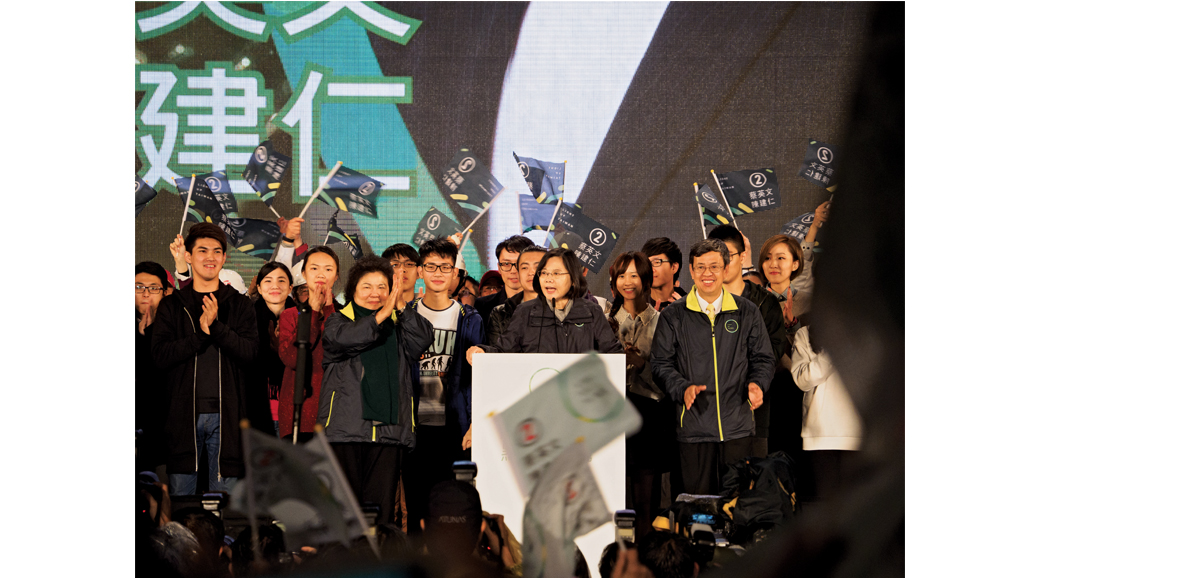Written by Seymour Topping
President Donald J. Trump, in flippant disregard of a binding American historical commitment, thrust the United States recently into a dispute with China over the status of Taiwan.
Ignoring what President Richard M. Nixon and Premier Zhou Enlai negotiated in Beijing in 1972, Trump made an issue of Beijing’s core “One China” policy, which holds that the lush island off the South China coast with its 23 million people is part of the People’s Republic of China.
The communiqué issued after Nixon’s talks in Beijing stated: “The United States acknowledges that all Chinese on either side of the Taiwan Strait maintain there is but one China and Taiwan is part of China.”
Trump came around to a respect for history after a phone conversation with President Xi Jinping of China. The White House described the call as a lengthy conversation during which Trump agreed to honor the One China policy, which he had previously refused to commit to, pending negotiation on such issues as trade deals. Nevertheless, the recent contretemps is a reminder that like a Chinese scroll painting, the One China policy is of delicate, intricate design.
President Jimmy Carter established formal diplomatic relations with the Beijing government on Jan. 1, 1979, and, at the same time, terminated diplomatic ties with Taiwan in conformance with Nixon’s commitment to the One China policy. Since then, the State Department has refrained from any contacts of a formal diplomatic nature with the Taiwan government in Taipei that would serve to rank the island internationally as a separate and independent nation.
Trump’s highly contentious slighting of the One China policy, traditionally Beijing’s most sanctified international policy position, ensued Dec. 2 with the president-elect’s acceptance of a telephone call from the president of Taiwan, Tsai Ing-wen, congratulating Trump on his election. Trump’s recognition thus of the Taiwanese president as the counterpart of his presidential self, head of an independent nation, was denounced by the Beijing government as a violation of the American commitment to the One China policy.
Trump’s offhand reaction to this Beijing complaint compounded the incident into a major fraying of relations between Washington and Beijing. In a television interview, Trump said he didn’t feel “bound by a One China policy unless we make a deal with China having to do with other things, including trade.” In yet another interview he reiterated that in dealing with China, everything is under negotiation, including One China. The Chinese Foreign Ministry retorted sharply with a statement rejecting Trump’s suggestion that recognition of the One China policy status of Taiwan could be used as a bargaining chip in the negotiation on trade and other issues. A spokesman said that the internationally recognized One China policy position was not negotiable.
Beijing’s evident resentment was so profound as to have a potentially divisive effect on such pending issues as Chinese cooperation with the United States on climate control, freedom of navigation through the contested South China Sea, trade and China’s continuing investment in U.S. Treasury securities, of which Beijing now has the largest reserve of any foreign country.
Beijing’s outrage about the phone exchange with Tsai was heightened by the fact that Tsai is the leader of the pro-independence Democratic Progressive Party and a key player in the ongoing debate in Taiwan over what should be the political alignment of the island. Tsai was elected president last year by a very large margin, defeating the pro-Bejing Kuomintang Party founded by Chiang Kai-shek. There is a general reluctance on the part of a majority of the Taiwanese people to coming under the sway of the authoritarian Beijing government. Tsai’s ruling party has leaned to independence for Taiwan.
Despite the political standoff with Beijing, relations with the mainland have broadened recently on nonpolitical matters such trade, investment and tourism. In November, Tsai received a delegation of Beijing officials and mainland business leaders to explore broader cooperation in agricultural trade. Foreign tourists have also been drawn to the island in increasing numbers, particularly to visit the national museum, which houses fabulous antiques that Chiang Kai-shek’s Nationalists brought with them in ships when Chiang fled the mainland before the Communist advance in 1949.
The recent warming of commercial relations between China and Taiwan is in keeping with Beijing’s policy of “peaceful attraction” of Taiwan to reunion with the motherland. The policy was first publicly enunciated in 1971 in an interview that Zhou Enlai granted to me and my journalist wife, Audrey, prior to his negotiation with Nixon the following year. The interview was published on the front page in The New York Times. While Zhou emphasized peaceful attraction, he also made clear that China could take military action to reintegrate Taiwan with the mainland if the leaders of the island unilaterally opted for independence. In 1950, President Harry Truman poised the United States Seventh Fleet in the Taiwan Strait when the Maoists on the mainland were preparing an assault on Taiwan to reassert sovereignty over the island. Chiang Kai-shek with American support had freed the island of Japanese colonial control following World War II. The Pentagon has never lost sight of the possibility that there might be a repeat of that confrontation.
If it were to occur, it would be far riskier now to place American naval forces in the Taiwan Strait to block any Communist cross-strait military invasion of the island. The Communists recently have planted military sites on the mainland shore of the Taiwan Strait capable of firing land-to-ship missiles designed to knock out any American naval intrusion. Beijing has also recently staged maneuvers by military aircraft over the island and sent naval units through the strait, obviously to remind Taipei that China reserves the option of a military invasion if Taiwanese leaders should unilaterally declare independence.
While the United States does not have diplomatic relations with Taiwan, it does have a military defense commitment to the people of the island under the Taiwan Relations Act enacted by Congress in April 1949. The act does not make an outright commitment by the United States to intervene militarily if China attempted a military takeover across the Taiwan Strait. But it does state: “The United States will make available to Taiwan such defense articles and defense services in such quantity as may be necessary to enable Taiwan to maintain sufficient self-defense capabilities.”
Under that clause, the United States has been selling weaponry to Taiwan regularly despite Beijing’s strong objections. As for the possibility of American military intervention, there is embodied in the act what had been described as “strategic ambiguity” intended to dissuade Taiwan from a unilateral declaration of independence in violation of the One China policy and to dissuade Beijing from unilaterally taking over Taiwan by military force.
Until now, Trump demonstrated little cognizance of the ramifications of tinkering with the delicate One China policy, which Beijing has shown readiness to uphold militarily. In brushing off questions raised about his protocol reception of Tsai, Trump said in a Twitter message: “Interesting how the U.S. sells Taiwan billions of dollars of military equipment but I should not accept a congratulatory call.” Apparently it did not occur to Trump that the manner of his presidential reception of Tsai might have encouraged her to lead her party to an even stronger stand for Taiwanese independence with all of its consequences.




